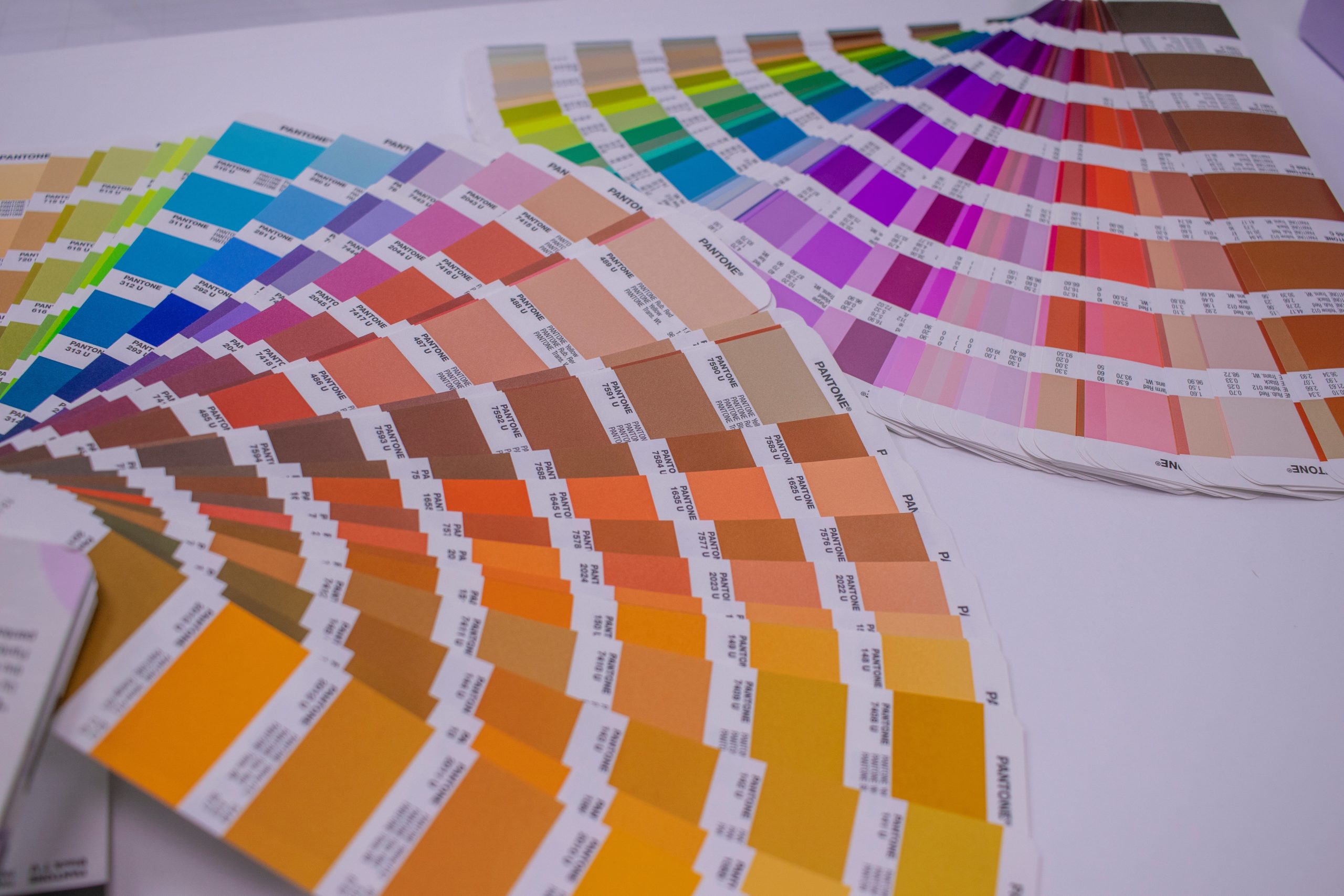Most owners of a personal brand have spent their fair share of time trying to “figure out” the perfect brand colors for their business. I often see these business owners resort to purchasing a $15 branding template from Etsy, copying some trendy color palettes they found on Pinterest, or just throwing together some random colors they feel look nice together.
The problem with this is that, like anything in business, a visual brand identity should be created strategically to align with the business and its target market. Generic color palettes are a fast track to blending into an already crowded marketplace.
The purpose of a brand’s visuals is to make the brand STAND OUT and be recognizable. This is why having unique and strategic visual elements is so important to a brand’s success.
If you are feeling overwhelmed and have no idea how to choose your brand colors for your business, here are my top tips as a brand designer for choosing brand colors – the strategic way!
Your Brand Colors are More Important Than You Think.
Your choice of colors for your brand are so important because they can affect your ideal client’s mood, perceptions, and emotions towards your business. Choosing the right colors for your brand identity will help you make an unforgettable first impression with your target market, which is extremely important in any saturated market.
Know Your Target Market
Before we dive into actually choosing your brand colors, it is vital to understand your target market/ideal clients on a deep, emotional level. Just like any marketing strategy, a visual brand strategy should be created with the consumer in mind.
Aside from the basics such as psychographics, demographics, geographics, behavior, etc., think about the type of visual aesthetics your target market is most drawn to. Are they attracted to minimalistic, clean aesthetics? Maybe they prefer a more bohemian, colorful aesthetic? I suggest doing market research to discover what visual aesthetics your target market is drawn to.
Also think about how you want your brand to make your target market FEEL. A brand is meant to create an emotional connection within a market that will lead to loyal, lifelong buyers from your business, so starting out with the vibe/feeling you want your brand to have should be your first step for choosing your brand colors.
For my branding clients, I work with them to come up with around 5 brand buzzwords that describe the vibe that they want their brand to give off. Some examples include elegant, playful, quirky, sophisticated, luxurious, bold, rebellious, corporate, etc.
These buzzwords act as the foundation for the brand’s color palette, as colors can immensely amplify the vibes you want your brand to give off.
Know Yourself
I know, I know, you’re probably tempted to skim past this section because “duh, I already know myself”! But here is the thing – in order to successfully connect with ideal clients who will vibe with you and your brand, it’s important to choose colors and aesthetics that not only speak to your target market, but reflect YOU as the business owner. When you can create a color palette that reflects you, your business, AND your ideal clients, you have yourself a winner.
Are there certain colors that just feel “so you”? Do you have some favorite colors or color combinations that excite you? What type of colors are you usually the most attracted to?
You, as a brand, should love your color palette. It doesn’t have to be chosen solely based off of color psychology, or what colors you *think* your target market will enjoy. When you love your brand colors, you will be all the more excited to show up for your brand.
Create a Mood Board for your Brand

After putting together a list of your brand buzzwords, creating a mood board – a collection of images, graphics, text and color combinations that create a unified aesthetic, can be a great way to visually embody your brand vibes and help create a cohesive look and feel for your branding. You can pull colors that are featured in the completed mood board to test potential color combinations before you finalize your brand colors.
This can be tricky for non-designers, so be sure to check out my blog post “How to Create a Moodboard for Your Brand” for a more in depth explanation of creating your own mood board.
Understand Color Psychology

Color is a vital part of the branding process because it can have a powerful effect on a person’s mood and behavior. Certain colors can provide feelings of peace, security, and happiness while others may cause feelings of unease or discomfort.
When you know the type of vibes you want your brand to have, and the way you want your ideal clients to feel when they think about your business, think about incorporating some colors into your color palette that will help embody these feelings.
Here’s a rundown of the psychology of all the colors in branding:
Red: Red is a powerful color. It is the color of love, passion, and danger. It can spark anger or joy. Red has a strong emotional response that can trigger memories and emotions in a way that no other color can.
Orange: Orange is a very energetic and motivational color. It’s also an appetite stimulant and is the color of health and success.
Orange has a stimulating effect on the brain. This is due to its ability to reflect higher levels of light than other colors. The effects of oranges on people can vary from increased mental alertness and energy, to hunger and irritation if it’s too bright or too dark.
Yellow: Yellow has been found to evoke happiness and security as well as increase memory retention.
Green: The color green is a symbol of renewal, growth, wealth, and abundance. It’s often associated with the environment and nature.
Blue: Blue is associated with success in business and leadership due to its association with trustworthiness and reliability. Blue also has feelings of security and serenity.
Purple: Purple can be interpreted as mysterious, regal, sophisticated, royal, serene, luxurious, glamorous or decadent.
Pink: The color pink is often associated with femininity, romance, and playfulness.It is also known to symbolize joy, happiness, and calmness.
Black: Black represents boldness, power, and sophistication. It’s a timeless brand color that can also create a mysterious, rebellious, and classic feel. Black actually has higher contrast than any other color, which may cause someone to feel stronger emotions about whatever they are looking at!
White: White is best used to represent clean, minimalistic brands. It’s also often associated with innocence and purity, however, in the branding world, it is usually used to create a clean and simple feel.
Putting it all together
Just to recap, there are 4 components to keep in mind when putting together your brand’s color palette:
First, keep your target market in mind, knowing how you want them to feel when buying from your brand, and what types of colors and aesthetics they are drawn to. Think about including at least one color in your brand color palette that psychologically embodies the way you want your target market to feel.
Next, reflect on the colors and color schemes that YOU are most drawn to, and feel are a good representation of you and your brand.
Once you’ve decided on what vibes you want your brand to emulate, create a cohesive mood board that includes visuals that showcase the overall look and feel of your visual brand, and use the eyedropper tool to pull 5-6 colors from the images in the board.

How to Choose Your Brand Colors For Your Business
November 14, 2021
Leave a Reply Cancel reply
LET'S CONNECT
COACHING
PROGRAMS
ABOUT
BLOG
SERVICES
CONTACT
WEBSITE DESIGNED BY KERRY IRELAND CREATIVE STUDIO
Kerry Ireland Creative Studio
Kerry Ireland is a Web & Brand Designer based out of Maryland. Her mission is to help entrepreneurs across the globe exponentially expand their brand and business so they can live the ultimate freedom-based lifestyle.